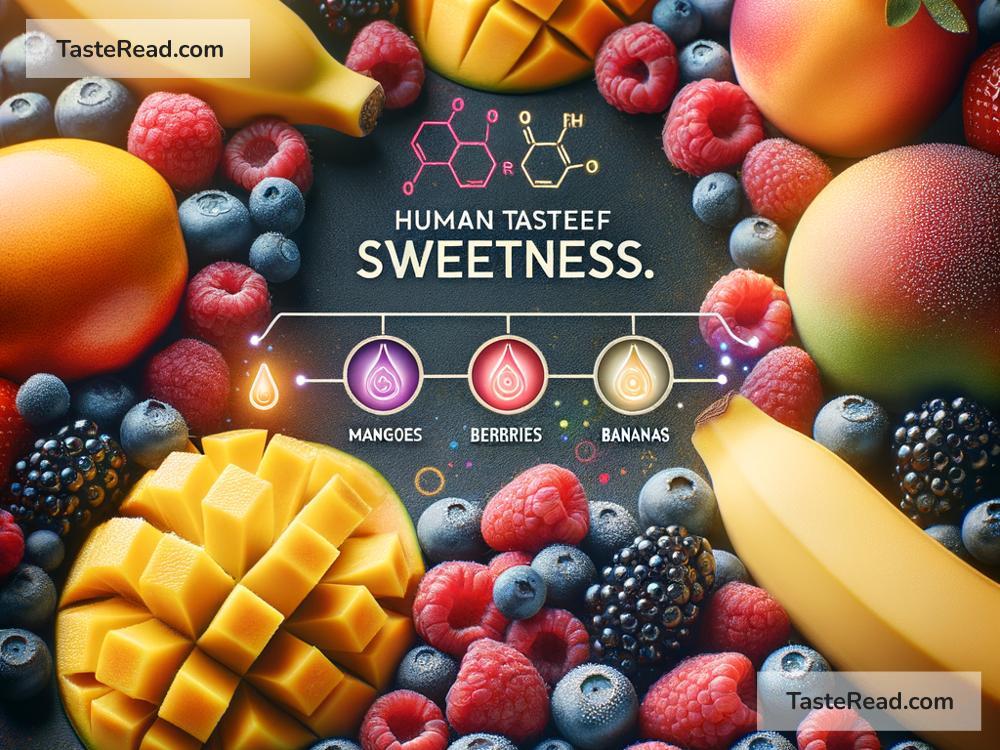How Taste Receptors Perceive Sweetness in Fruits
Have you ever bitten into a juicy mango or enjoyed the delightful sweetness of a ripe strawberry and wondered, “Why does this taste so sweet?” It’s all thanks to the fascinating way our taste receptors interact with the natural sugars in fruits. Let’s take a closer look at how your tongue and brain work together to recognize sweetness and the science behind your favorite fruity flavors!
The Role of Taste Buds
Sweetness is one of the five main tastes your tongue can recognize, along with salty, sour, bitter, and umami (savory). Inside your mouth, particularly on your tongue, are tiny clusters of cells called taste buds. Each taste bud contains taste receptor cells, which are responsible for detecting and interpreting flavors. Adults typically have 2,000 to 4,000 taste buds spread across their tongue, the roof of the mouth, and even the throat!
When you eat something sweet, like a fruit, the sugars in that fruit dissolve in saliva and come into contact with your taste buds. The taste receptor cells within the buds react to specific molecules in those sugars, triggering signals that travel to your brain to identify the taste as “sweet.”
What Makes Fruits Sweet?
Most of the sweetness in fruits comes from natural sugars, such as fructose, glucose, and sucrose. These sugars are part of the fruit’s makeup as it develops and ripens. Fructose, in particular, is known for being especially sweet and gives fruits like mangoes, cherries, and grapes their signature flavors.
Interestingly, not all fruits are equally sweet. Some, like lemons and cranberries, have less sugar but more acidic compounds that make them taste sour. Others, like bananas and pineapples, generate lots of natural sugars as they ripen, resulting in a sweeter bite. The balance of sugars and acids in a fruit is what creates its unique flavor profile.
How Do Taste Receptors Detect Sweetness?
The sweetness-detecting process begins with taste receptor cells, specifically ones that contain special proteins called sweet taste receptors. These proteins are uniquely designed to recognize sugar molecules. When fructose, glucose, or sucrose from the fruit binds to the receptor proteins, it sets off a chain reaction inside the receptor cell.
This process triggers electrical signals, which shoot up through nerves connected to the tongue and ultimately reach the brain’s gustatory cortex — the part of the brain responsible for processing taste. Once the brain receives these signals, it interprets the sensation as “sweetness.” This is why you instantly recognize the sweet flavor when you bite into a ripe peach or a melon.
The Sweetness of Ripe Fruits
Have you ever noticed that fruit tastes sweeter as it ripens? This happens because the fruit’s sugar content increases during the ripening process. When fruits are unripe, they tend to have more starch and less sugar. During ripening, enzymes convert starches into sugars, which enhance the fruit’s natural sweetness. That’s why a green banana tastes bland, while a yellow, fully ripe banana is sweet and satisfying.
Ripening also involves the breakdown of acidic compounds in the fruit, softening its tartness and making the sweetness more pronounced. This delicate balance of sugars and acids ensures the fruit tastes its best right when it’s ready to eat.
Why Do We Crave Sweet Fruits?
Humans have a natural preference for sweet flavors, and fruits are an excellent way to satisfy that craving. This preference likely evolved as a survival mechanism. Sweet foods, including fruits, often contain lots of energy (in the form of carbohydrates). By seeking out sweetness, our ancestors ensured they had access to calorie-rich, nutritious foods.
Fruit sweetness is especially appealing because it’s paired with naturally occurring vitamins, minerals, and fiber. Unlike artificially sweetened treats, fruits provide energy along with essential nutrients, making them a wholesome and tasty choice.
How Sweetness Is Linked to Health
While the sugars in fruits are natural and less harmful than processed sugars, balance is still key. Eating whole fruits rather than drinking fruit juices or consuming fruits with added sugar ensures you’re enjoying their natural sweetness alongside fiber, which helps regulate blood sugar levels.
Additionally, the sweetness in fruits can be an excellent substitute for sugary snacks or desserts. Instead of reaching for candy or cookies, you can eat a refreshing slice of watermelon or a handful of berries to satisfy your sweet tooth in a healthy way.
Conclusion
The ability to perceive sweetness in fruits is a beautiful blend of biology and chemistry. Your taste receptors on your tongue work tirelessly to detect and interpret the natural sugars in fruits, sending signals to your brain to deliver the delightful sensation of sweetness. From the ripening process to the brain’s interpretation of taste, every step ensures that fruits are not only nutritious but also enjoyable.
So the next time you savor the sweetness of a perfectly ripe fruit, take a moment to appreciate the science behind your taste buds. Whether you prefer the sugary tang of a pineapple or the mellow sweetness of a pear, fruits are nature’s gift of flavor and nutrition — and your taste receptors are the key to enjoying them!


